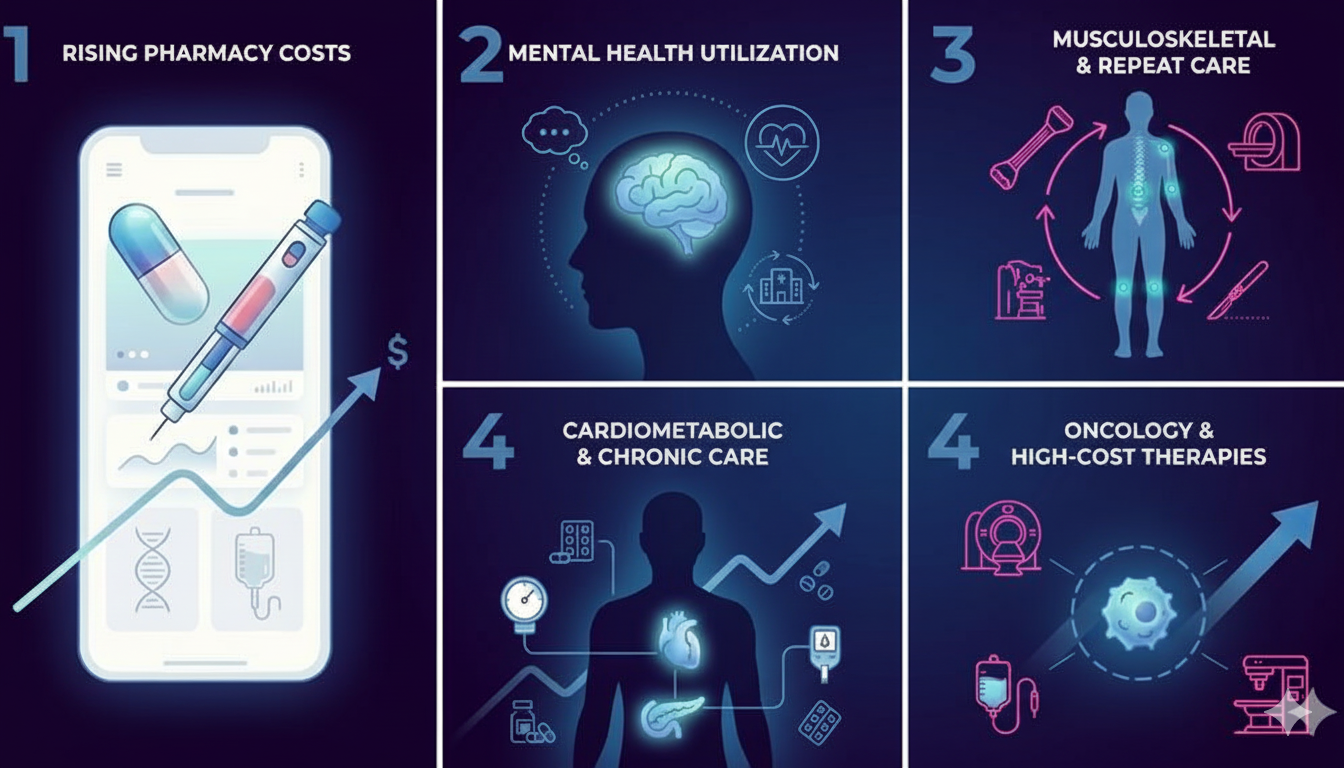Benefits renewal season often becomes a routine process—review last year’s plan, adjust for rate changes, and move on. But savvy brokers know that renewals can be much more than just administrative check-ins. They're prime moments to deliver real value, deepen client relationships, and generate new revenue.
In this blog, we’ll show you how to transform each renewal meeting into a strategic opportunity. You’ll get a ready-to-use talk track, a detailed checklist, and practical ideas to grow your book of business—without sounding salesy.
Why Renewal Meetings Are Undervalued
For many brokers, renewal meetings feel like paperwork. But for your clients, this is when healthcare costs, coverage concerns, and employee satisfaction are front and center. That makes it the perfect time to step into a more strategic, consultative role.
Here’s why renewal meetings matter:
- HR and finance leaders are most engaged. They’re planning next year’s budgets and open to new ideas.
- Employee sentiment is top of mind. Open enrollment feedback is fresh and often shared with HR.
- Data is readily available. You can analyze last year’s usage to suggest smarter options.
Instead of sticking to rate comparisons and provider changes, elevate the conversation by aligning your services to their business goals.
Top 7 Revenue Opportunities at Renewal

If you want to go beyond “basic brokerage,” look for ways to add value that support cost control and employee satisfaction. Here are seven ways to do it:
1. Shift the Mindset From Renewal to Strategy
Most HR teams expect brokers to bring rate updates and plan comparisons. Surprise them by reframing the conversation:
“Let’s go beyond just renewing your benefits—this is a chance to revisit your strategy, optimize spend, and boost employee satisfaction.”
This simple shift sets you up as a consultative partner, not a vendor.
2. Use Census and Utilization Data to Uncover Insights
Analyze the client’s census and benefits usage data ahead of the meeting. Look for:
- Employees enrolled in misaligned plans
- Over-utilization of ER or urgent care
- Underused preventive services
- Gaps in dependent coverage or high spousal enrollment
Bring 2–3 actionable insights to show you’re proactively managing their plan.
3. Model ROI-Driven Plan Alternatives
Go beyond plan summaries. Show side-by-side comparisons that highlight:
- Total cost savings for the company
- Lower out-of-pocket costs for employees
- Estimated tax savings with HSA-compatible plans
This moves the discussion from “what’s changing” to “what’s possible.”
4. Upsell Voluntary Benefits With High Perceived Value
HR is open to new ideas—especially if they’re voluntary and easy to implement. Consider suggesting:
- Hospital indemnity or critical illness
- Financial wellness or identity protection
- Legal assistance, pet insurance, student loan support
These are value-adds that increase employee satisfaction and retention.
5. Introduce Year-Round Engagement Tools
Benefits shouldn't disappear after open enrollment. Offer tools like Slack or Microsoft Teams-based AI assistants that:
- Reduce HR support burden
- Increase benefit literacy
- Improve employee satisfaction year-round
Position these tools as a modern upgrade to the overall benefits experience.
6. Offer Add-On Services That Reduce Costs
Clients want help managing healthcare spend. Use the renewal to pitch strategic add-ons like:
- Dependent eligibility audits
- High-cost claims analysis
- Pharmacy benefits consulting
These tools help reduce costs and improve compliance without sounding like a sales pitch.
7. Add Executive Benefits or Leadership Enhancements
Executives have unique needs. Recommend specialized benefits such as:
- Long-term disability or supplemental life
- Concierge medical care or second opinion services
- Deferred compensation and retention programs
These enhancements increase leadership satisfaction and profitability for your brokerage.
Talk Track: How to Lead a Strategic Renewal Meeting

A strong talk track helps you run a strategic and consultative renewal meeting. Here’s a simple flow:
1. Set the Strategic Tone
“Thanks for making time today. Instead of just reviewing renewal rates, I’d love to take a broader look at your benefits strategy—what’s working, what could improve, and where we can find savings or boost satisfaction.”
2. Share Data-Driven Insights
“We analyzed your plan usage and census data. Here are a few trends that stood out:
- 12% of employees may be over-insured
- ER visits are up 30% year-over-year
- A large portion isn’t taking advantage of preventive care benefits”
3. Present ROI-Based Options
“We explored a few alternative plan designs. One option could save your company $6,500 a year while keeping deductible levels stable for 80% of your team.”
Use visuals: bar graphs, cost comparisons, and impact charts.
4. Introduce Value-Add Services
“We’ve seen similar companies benefit from adding financial wellness tools or hospital indemnity. They’re voluntary, easy to implement, and help with employee retention.”
5. Close With a Forward-Looking Statement
“Beyond this renewal, we’d love to help you build a benefits experience that supports your employees year-round. We have tools that can make that easy and automated.”
Renewal Meeting Checklist for Brokers
🔍 Before the Meeting
- Analyze census data by age, tier, and plan type
- Review claims or utilization reports
- Benchmark plans against industry standards
- Prepare 2+ optimized plan configurations
- Identify gaps or underutilized benefits
- Create visual plan comparison deck
💬 During the Meeting
- Set a strategic tone
- Present key insights and trends
- Highlight ROI from alternative plans
- Recommend at least one new service
- Introduce employee engagement tools
- Ask about executive benefit needs
📩 After the Meeting
- Send follow-up email with slides and recommendations
- Include pricing and implementation timelines
- Share employee communication templates
- Schedule Q1 or Q2 check-in
Tools That Make Renewal More Strategic
Here are four types of tools brokers can use to stand out:
📊 Census Analytics Software
Tools like BenOsphere CensusIQ help identify plan mismatches, cost gaps, and upsell opportunities using enriched employee profiles.
💬 AI Benefits Assistants
Use Slack, Teams, or SMS-based bots to answer employee questions year-round and reduce HR load.
📈 Plan Modeling Calculators
Show total cost of ownership (premium + deductible – HSA tax savings) to help clients make smarter decisions.
🕵️ Claims & Dependent Audit Tools
Spot overspending trends and identify ineligible dependents to proactively reduce costs.
Useful Resources
Final Thoughts
A renewal meeting isn’t just a contract check-in. It’s your best shot each year to:
✅ Reinforce your role as a trusted advisor
✅ Drive new revenue through value-adds
✅ Help clients reduce costs and improve coverage
✅ Deepen relationships and increase retention
With the right preparation, data, and tools, every renewal becomes a business development opportunity—not a formality.
Want to turn your renewals into ROI-generating strategy sessions?
👉 Book a demo with BenOsphere to explore census insights, AI-driven engagement tools, and benefit optimization strategies designed for modern brokers.







